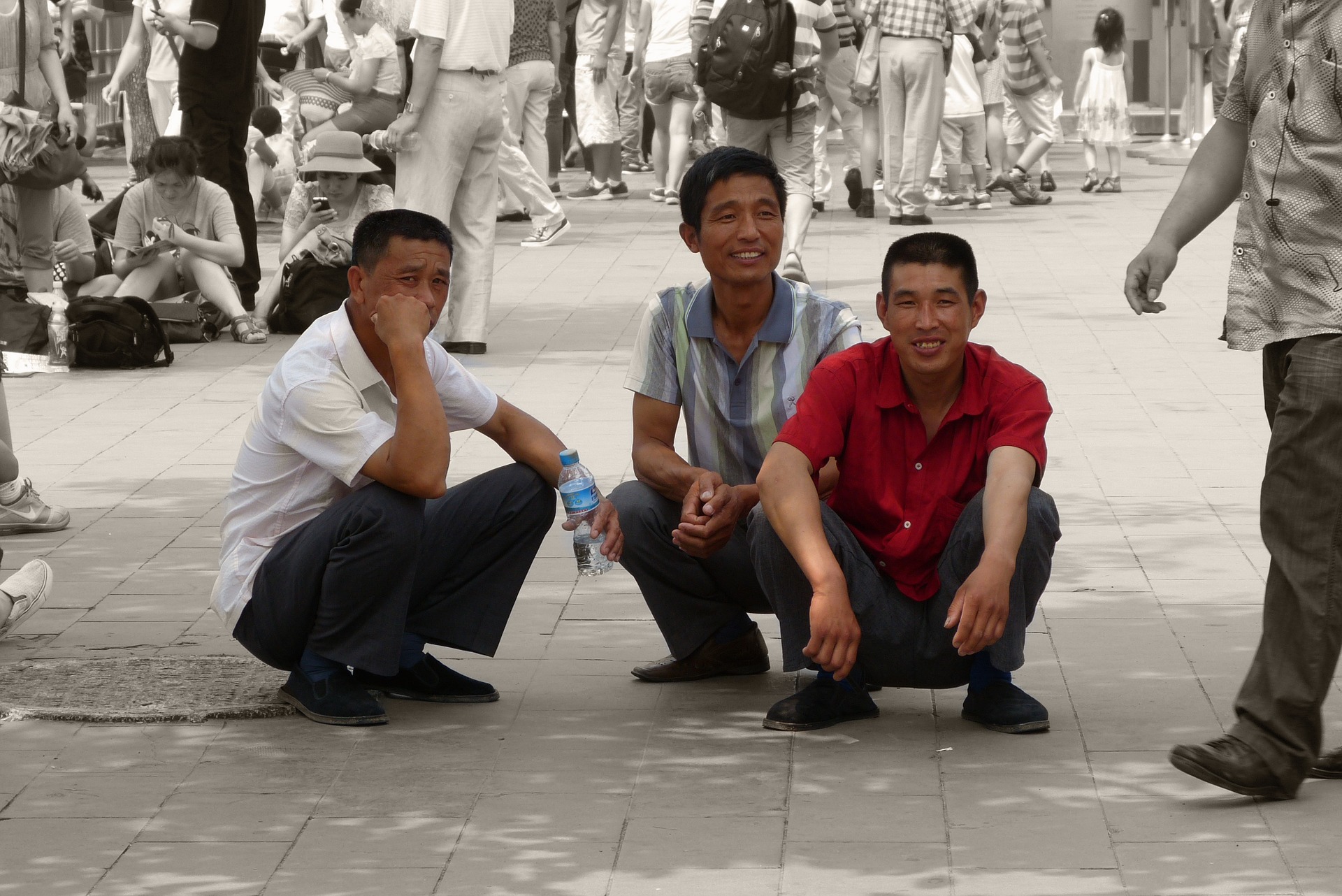In a cogent and multifaceted analysis, political economist Syaru Shirley Lin shows that Taiwan’s brand of nationalism has become less emotional and increasingly pragmatic since democratization.
According to a recent poll conducted by Taiwan’s Mainland Affairs Council, more than 80% of Taiwanese think the government of the People’s Republic of China (PRC) should recognize the Republic of China (ROC), and 85% believe that Beijing should respect Taiwan’s democratic system and popular opinion. In the same poll, the majority of respondents (45%) said they consider the speed of development of cross-Strait exchanges to be too slow, compared to just 6.7% who believe it to be too fast. In other words, despite being dissatisfied with the PRC’s treatment of their island-nation, and with sustained concerns about Taiwan’s economic dependency on China, many Taiwanese want to accelerate the development of cross-Strait relations. Isn’t there a contradiction in these two positions?
Not according to Syaru Shirley Lin, a former partner at Goldman Sachs and a political economist who teaches at the University of Virginia and the Chinese University of Hong Kong. In her 2016 book Taiwan’s China Dilemma, Lin provides a cogent explanation of how these two ideas — that the PRC ought to recognize the ROC and that cross-Strait relations are developing too slowly — not only coexist, but are in fact logically consistent in Taiwan today.
 Subtitled “Contested Identities and Multiple Interests in Taiwan’s Cross-Strait Economic Policy,” Lin’s book is an attempt to make sense of the oscillations of Taiwan’s China policy in the past three decades. Why has its economic approach to China been so inconsistent and seemingly irrational, with periods of vigorous liberalization followed by stringent protectionism? The key to the puzzle, Lin argues, is the coeval development of a distinct Taiwanese national identity, based increasingly on an inclusive set of shared civic values, as opposed to narrowly defined ethnicity. Underpinning this development — every election, every protest, every act of cross-Strait exchange — is Taiwan’s uniquely lonely dilemma: its most important economic partner is also an existential threat.
Subtitled “Contested Identities and Multiple Interests in Taiwan’s Cross-Strait Economic Policy,” Lin’s book is an attempt to make sense of the oscillations of Taiwan’s China policy in the past three decades. Why has its economic approach to China been so inconsistent and seemingly irrational, with periods of vigorous liberalization followed by stringent protectionism? The key to the puzzle, Lin argues, is the coeval development of a distinct Taiwanese national identity, based increasingly on an inclusive set of shared civic values, as opposed to narrowly defined ethnicity. Underpinning this development — every election, every protest, every act of cross-Strait exchange — is Taiwan’s uniquely lonely dilemma: its most important economic partner is also an existential threat.
Lin is a political economist and Taiwan’s China Dilemma will appeal mainly to a scholarly and policy-making audience. Her systematic treatment of her subject and her deployment of the terminology of political science (“contested” and “uncontested” identities, “consummatory” vs. “instrumental” values, for example) place the book firmly within the academic genre, and yet there is much here for the non-wonk to admire and engage with. Indeed, the graphs, charts and technical language only lend power to Lin’s narrative, which tells a story so momentous that it transcends genre: the rise of Taiwanese national identity and with it, Taiwanese nationalism.
Opinion clusters
In the period 1988 to 2010, Lin identifies four key episodes in which Taiwan reversed its cross-Strait economic policy. She treats each episode in its own chapter, along with a case study from a particular sector of Taiwan’s economy. Early in the book, Lin lays out the four main “opinion clusters” that have driven Taiwan’s cross-Strait economic policymaking since democratization. Positioned along a spectrum from extreme protectionism on one end to extreme liberalization on the other, those clusters are extensive restriction, moderate restriction, moderate liberalization, and extensive liberalization. In her commentary on each episode, Lin describes how the debate over national identity determined which opinion cluster won out when it came to formulating cross-Strait economic policy.
Lin draws on an impressive variety of sources, including scholarly literature on identity and economic interests, government documents, policy memos, and news reports. Most important, perhaps, are the interviews that she conducted with a plethora of Taiwanese opinion leaders in academia, business, government and the media. For her conclusions on the development of national identity, she relies chiefly on polls conducted by the Election Study Center at National Chengchi University and the Center for Survey Research at Academia Sinica. The two survey topics that Lin pulls out are self-identification (either Taiwanese, Chinese, or dual identity) and preferred future national status (unification now or later, status quo now or indefinitely, independence now or later).
Across the period she surveys, Lin finds an unmistakable trend: “Taiwan is moving toward a consolidated national identity as broadly Taiwanese rather than Chinese, with the common political objective of maintaining autonomy, rather than moving toward unification.” At the outset of democratization in the late 1980s and early 1990s, national identity was highly contested, with an emotion-laden debate playing out between those who considered themselves exclusively “Chinese” on one hand, and those who saw themselves as exclusively “Taiwanese” on the other. By 2014, however, what Lin describes as a “broadly” Taiwanese identity (encompassing both exclusively Taiwanese and dual Taiwanese/Chinese identity) was dominant, with over 90% support in the polls and both political parties rallying around the existence of a distinct national identity.
How did this narrative unfold, and what has it meant for Taiwan’s cross-Strait economic policy? Firstly, Taiwanese identity has not simply grown stronger; its content has evolved over time. Lin is as sensitive an observer of the intangible and expressive elements of national identity as she is a perspicacious analyst of economic policy. As Taiwan’s democracy matured across several election cycles, she writes, “Taiwanese national identity came to reflect a strong sense of institutional, societal, and cultural characteristics best described as a ‘way of life.’” An ethnic definition of national identity, once defined by the distinction between waishengren (Taiwanese born in China) and benshengren (native-born Taiwanese), has given way to one characterized by participation in democratic society and commitment to the associated civic values of liberty, equality and other fundamental human rights.
The other side
National identity is just as often defined by what it isn’t than what it is. The second major factor in the rise of Taiwanese national identity is China’s behavior and its own development on the other side of the Strait. Lin points out that the PRC government’s attempts to woo — or intimidate — Taiwanese voters and isolate Taiwan internationally have been wholly counterproductive, often inflaming anti-China sentiment and causing Taiwanese to further embrace their separateness. It is no coincidence that in 2005, the year the PRC’s National People’s Congress passed the Anti-Secession Law stipulating the use of force against Taiwan should it move toward independence, “Taiwanese” became the most popular identity category in surveys.
The higher the temperature of the debate around national identity — Taiwanese, Chinese, both? — the more extreme the economic policy options advocated on either side. In the 1990s, when almost a quarter of survey respondents described themselves as either exclusively Chinese or exclusively Taiwanese, public opinion on cross-Strait economic policy tended to diverge around the two ends of the spectrum, extensive restriction and extensive liberalization. In chapter three, Lin describes president Lee Teng-hui’s “No Haste” policy, which outright prohibited certain investments in China and reflected popular support for a highly restrictive cross-Strait economic policy against the backdrop of the 1995-1996 missile crisis. The profound sense of physical and political insecurity engendered by China’s military threats proved to be a crucible of Taiwanese identity: between 1996 and 1998, the percentage of respondents who claimed an exclusively Taiwanese identity almost doubled to 42%, and would continue to rise into new millennium.
By the mid-2000s, with consensus around identity building, debates around Taiwan’s China policy had become less inflected by emotion and more pragmatic in nature. Public opinion began to converge toward the center of the spectrum, with those in favor of a more nuanced approach — either moderate restriction or moderate liberalization or a mixture of the two — dominating debates around cross-Strait economic policy. Security was no longer the sole factor at play; growth, stability and by 2006, equity, became equally important in discussions of policy towards China. By 2010, Lin writes, “with their identity firmly consolidated, Taiwanese could now focus on deciding what kind of cross-Strait relationship would best promote their economic interests.”
Lin’s treatment of the Sunflower Movement as the case study of the fourth episode (centered on president Ma Ying-jeou’s campaign for closer economic ties with China) is particularly illuminating. She credits the movement for its intersectionality, the extent to which it cut across lines of ethnicity, age, class, and political affiliation. She also notes that while most participants favored extensive or moderate restriction in cross-Strait economic policy, some moderate liberalizers joined in the protest. With national identity no longer a question — by 2009, for the first time, a majority felt exclusively Taiwanese — the participants were focused on the more urgent problems of political and economic inequality with China, which they feared the Cross-Strait Services Trade Agreement (CSSTA) would exacerbate. For Lin, the movement was proof that “Taiwan had succeeded in grooming a generation that cared about the island’s future in terms of its identity as a democratic society, striving to balance equity with growth.”
The fact that Lin takes the grassroots movement seriously enough to treat it in a case study (alongside the petroleum and semiconductor industries in previous chapters) speaks to her flexibility and receptivity as an analyst, but also to her holistic understanding of Taiwanese society: as a native-born Taiwanese who grew up under martial law, Lin understands the power of protest to effect change. In the acknowledgements, she pays tribute to her grandmothers, who “epitomized the indomitable spirit of generations of Taiwanese who came to the island from different places and fought to create a modern community with democratic values.” Far from threatening her objectivity, Lin’s personal connection to her subject is manifest only in her determination to do justice to Taiwan’s complex reality.
Safely engage
Ultimately, the rise of Taiwanese national identity has not driven Taiwan toward protectionism, but has facilitated further liberalization of trade and investment in China (although the extent of that liberalization remains controversial). This is less of a paradox than a positive feedback loop. Secure in their identity as members of a democratic society, many Taiwanese now feel confident they can “engage with China without giving up their values.” And the more Taiwanese come into contact with their “other” across the Strait, the more consolidated their identity becomes. Recent developments in Hong Kong’s governance under the “One Country, Two Systems” formula have only served to sharpen the contrasts between Taiwan’s multi-party democracy and China’s one-party state. As President Tsai Ing-wen said in an interview with the Washington Post last year, “Different generations and people of different ethnic origins have different views on China. But they all agree on one thing. That is democracy.”
In her conclusion, Lin traces four possible directions for the future of cross-Strait relations: a more Chinese (but still democratic) Taiwan via economic integration; a democratic China that can attract Taiwan based on shared civic values; a China that no longer prioritizes unification; and a Taiwan that moves further toward a separate identity or at least continues to refuse to consider unification.
Taiwan’s China Dilemma makes clear that the power of Taiwanese identity derives from the fact that it is defined not by ethnicity but by a broad set of values predicated on the intrinsic freedom and dignity of the individual: it is liberal in the classical sense of the term.
The book would be richer for more speculation, but Lin is too disciplined an analyst for that. For her, a more pressing concern is the kind of populist backlash (against China) that the rise of Taiwanese nationalism might precipitate, especially given rising income gaps and stagnation of real wages. This, Lin states in the preface, is a challenge faced by many countries today: “in an increasingly globalized world, as the need to integrate with the international economy grows, so does the desire to maintain a distinctive identity with one’s own values.” In this respect, the rise of Taiwanese nationalism shares certain features with the recent rise of nationalism around the world.
But not all nationalisms were created equal. Lin points out, rightly, that Taiwan’s own form of nationalism “has become less emotional and increasingly pragmatic” since democratization. And it should go without saying that the nationalism that underpinned the Sunflower Movement is a world away from the ethno-nationalism(s) peddled by the recent political campaigns of Donald Trump, Marine Le Pen and the pro-Brexit U.K. Independence Party. Taiwan’s China Dilemma makes clear that the power of Taiwanese identity derives from the fact that it is defined not by ethnicity but by a broad set of values predicated on the intrinsic freedom and dignity of the individual: it is liberal in the classical sense of the term. As Harvard political scientist Yascha Mounk has recently suggested, one antidote to rightwing populism might not be less nationalism, but a different kind of nationalism: an inclusive, liberal nationalism which validates people’s relationships to their culture without collapsing into ethnocentrism or xenophobia. If you accept this, Taiwan might now have much to teach the Western democracies from which it once took inspiration.
Book Details
Taiwan’s China Dilemma: Contested Identities and Multiple Interests in Taiwan’s Cross-Strait Economic Policy
By Syaru Shirley Lin
Stanford University Press (2016)
304 pages
You might also like
More from Book Reviews
Lawyer, Advocate, Activist: Chiu Hsien-chih’s Vision for Justice in Taiwan
In his book ‘Stand By You,’ human rights lawyer Chiu Hsien-chih examines major human rights cases, problems with Taiwan’s legal …
New Book of Tibetan Short Stories Challenges China Narrative
‘Old Demons, New Deities’ will resonate in Taiwan, a country that, like Tibet, is torn between the competing realities of …









